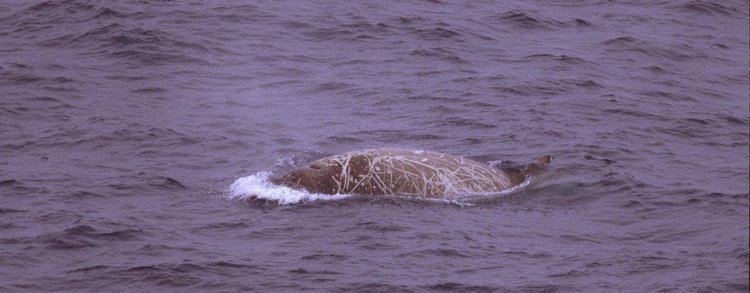Order Artiodactyla Family Ziphiidae Scientific name Hyperoodon planifrons Rank Species | Phylum Chordata Genus Hyperoodon Higher classification Bottlenose whale | |
 | ||
Similar Bottlenose whale, Gray's beaked whale, Shepherd's beaked whale, Andrews' beaked whale, Strap‑toothed whale | ||
Southern bottlenose whale meaning
The southern bottlenose whale (Hyperoodon planifrons) is a species of whale, in the ziphiid family, one of two members of the genus Hyperoodon. Seldom observed and rarely hunted, the southern bottlenose whale is probably the most abundant whale in Antarctic waters. The species was first described by English zoologist William Henry Flower in 1882, based on a water-worn skull from Lewis Island, in the Dampier Archipelago, Western Australia.
Contents
- Southern bottlenose whale meaning
- Description
- Feeding
- Population and distribution
- Conservation
- Specimens
- References
Description
The southern bottlenose whale is fairly rotund and measures 7.5 m (25 ft) in length when physically mature, considerably smaller than the northern bottlenose whale. The melon is extremely bluff. The beak is long and white on males but grey in females. The dorsal fin is relatively small at 30–38 cm (12–15 in), set behind the middle of the back, falcate (sickle-shaped), and usually pointed. The back is light-to-mid grey. It has a lighter underside.
Feeding
The southern bottlenose whale feed mainly on squid and krill.
Population and distribution
The southern bottlenose whale has a circumpolar distribution in the Southern Ocean. It is found as far south as the Antarctic coast and as far north as the tip of South Africa, New Zealand's North Island and the southern parts of Brazil. The global population is unknown.
Sightings of bottlenose whales in tropical and subtropical waters belong to a poorly known species, Longman's beaked whale.
Conservation
The southern bottlenose whale is not believed to be threatened by human actions. The species has seldom been hunted. Forty-two were caught in the Antarctic by Soviet whalers between 1970 and 1982. In addition, the Southern bottlenose whale is covered by the Memorandum of Understanding for the Conservation of Cetaceans and Their Habitats in the Pacific Islands Region. (Pacific Cetaceans MOU).
